Air travel is a fairly recent invention, but it is no secret that humanity has always dreamed of flying through the clouds. It is also one of the safest means of transportation, but not only that. The plane gave humanity freedom, the freedom to move, explore, know, and connect with places and people even on the opposite side of the planet in just a few hours. Yet, there are still people that are afraid of flying, but who can blame them?
There have been numerous plane crashes over time, some of them being known as the deadliest air crashes in history, and this is because as the capacity of the aircraft has increased, so has the number of casualties. However, with every air disaster that occurred, human loss and the suffering of the families of the victims determined the investigators to find out the cause, take the necessary measures, and create new developments and standardizations so that such incidents would never happen again.
Grand Canyon Mid-Air Collision (1956)

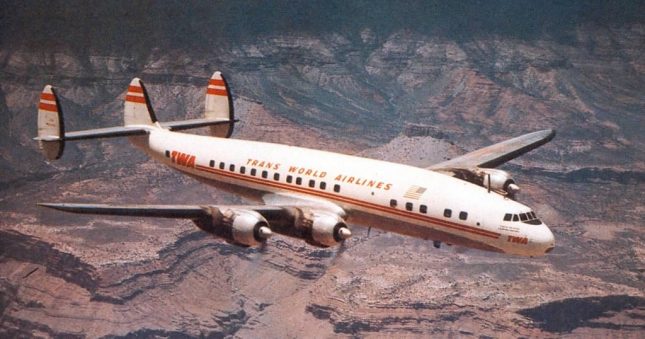
| First Aircraft Type: | Douglas DC-7 Mainliner |
|---|---|
| Cause of the crash: | The collision took place in uncontrolled airspace, where it was the pilots’ responsibility to maintain separation (“see and be seen”). |
| Survivors: | 0 |
| Fatalities: | 58 |
| ——– | ——– |
| Second Aircraft Type: | The Lockheed L-1049A Super Constellation |
| Survivors: | 0 |
| Fatalities: | 70 |
This devastating air crash happened on 30 June 1956 above Grand Canyon National Park, when two planes collided together. Both planes involved in the crash, a United Airlines Douglas DC-7 and a Trans World Airlines Lockheed L-1049, took off from LAX Airport a few minutes apart. All 128 people on board died. Following this air disaster, the American Air Traffic control system received an update, and the Federal Aviation Agency was created.
New York Collision (1960)
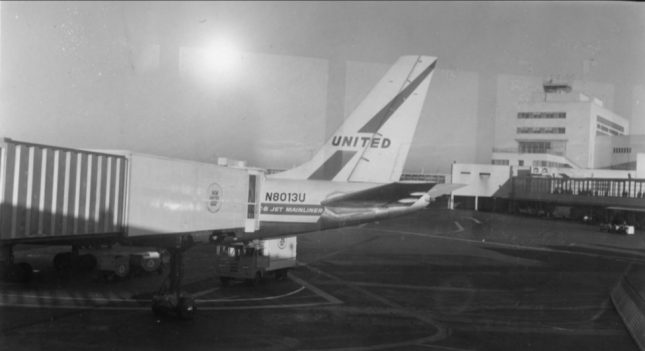
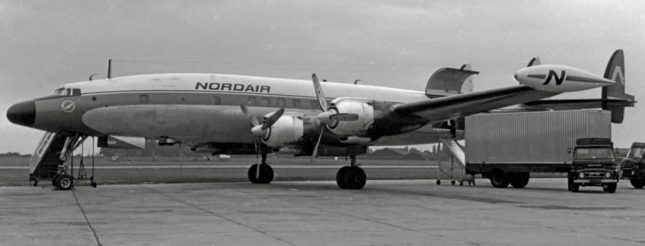
| First Aircraft Type: | Douglas DC-8-11 |
|---|---|
| Cause of the crash: | The United Airlines pilot did not respect its clearance limit. |
| Survivors: | 0 |
| Fatalities: | 84 |
| ——– | ——– |
| Second Aircraft Type: | Lockheed L-1049A Super Constellation |
| Survivors: | 0 |
| Fatalities: | 44 |
On December 16, 1960, a United Airlines Douglas DC-8 plane crashed into a Trans World Airlines Lockheed L-1049 near New York. Both planes successfully took off from Idlewild Airport, now known as JFK International Airport. The 128 people that were on board died that day. The accident, which was the first air crash involving a black box, occurred because the United Airlines pilot did not respect its clearance limit.
Martinair Flight 138 (1974)

| Aircraft Type: | McDonnell Douglas DC-8-55CF |
|---|---|
| Cause of the crash: | The investigation revealed that this accident was caused both by the pilots’ inability to identify their own position vis-a-vis the airport and by the poor communication of air traffic control with the crew members. |
| Survivors: | 0 |
| Fatalities: | 191 |
Departed from Juanda International Airport, Surabaya, Indonesia for Jeddah International Airport, Jeddah, Saudi Arabia, the Martinair Flight 138 was carrying 191 passengers on board on December 4th, 1974. McDonnell Douglas DC-8-55CF aircraft communicated actively with the air traffic control while preparing to land. The air traffic control cleared the flight down to 8,000 ft (2,400 m) and then to 2,000 ft (610 m), but the aircraft crashed into the Saptha Kanya Mountain at an altitude of approximately 4,355 ft (1,327 m). The investigation revealed that this accident was caused both by the pilots’ inability to identify their own position vis-a-vis the airport and by the poor communication of air traffic control with the crew members.
Turkish Airlines Flight 981 (1974)
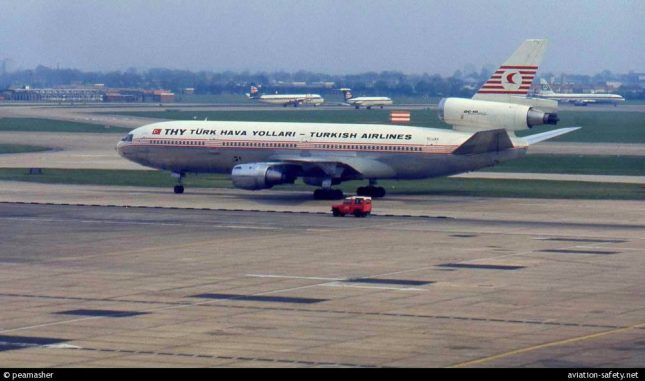
| Aircraft Type: | McDonnell Douglas DC-10 |
|---|---|
| Cause of the crash: | The main cause of this accident was an error in the design of the cargo compartment door that blew during the flight, causing a fast decompression. |
| Survivors: | 0 |
| Fatalities: | 346 |
The Turkish Airlines Flight 981 incident is also known as the Ermenonville air disaster due to the location where it crashed. The McDonnell Douglas DC-10 plane that departed from Heathrow Airport, London crashed minutes before landing for the stopover in Orly Airport, France. The main cause of this accident was an error in the design of the cargo compartment door that blew during the flight, causing a fast decompression. All 346 passengers died, remaining one of the deadliest air crashes in the history of the DC-10 aircraft.
Tenerife Airport Collision (1977)
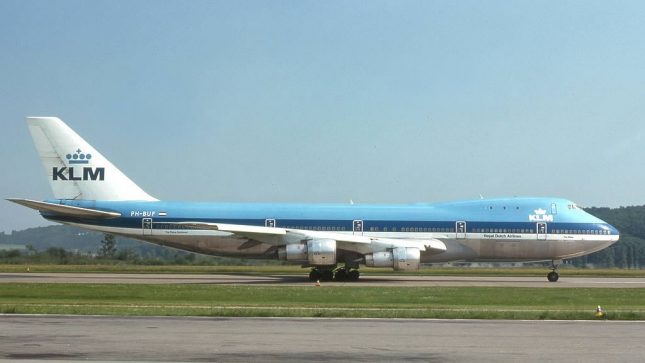
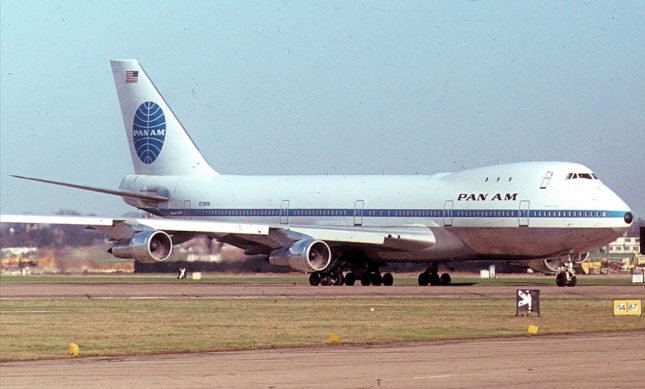
| First Aircraft Type: | Boeing 747-206B |
|---|---|
| Cause of the crash: | The foggy weather and the mistake made by the pilot of the KLM flight who thought that his plane had been cleared for takeoff. |
| Survivors: | 0 |
| Fatalities: | 248 |
| ——– | ——– |
| Second Aircraft Type: | Boeing 747-121 |
| Survivors: | 61 |
| Fatalities: | 335 |
Next on our list is the Tenerife Airport collision that resulted in the death of 583 passengers and only 60 survivors. The two Boeing 747 aircrafts involved in the crash, KLM Flight 4805 and Pan An Flight 1736, had to land at the Grand Canaria Airport, but due to an explosion there, the planes got diverted to the Tenerife Airport. The reasons for the terrible tragedy were the foggy weather and the mistake made by the pilot of the KLM flight who thought that his plane had been cleared for takeoff. This accident led to improvements in the standardization of air traffic control.
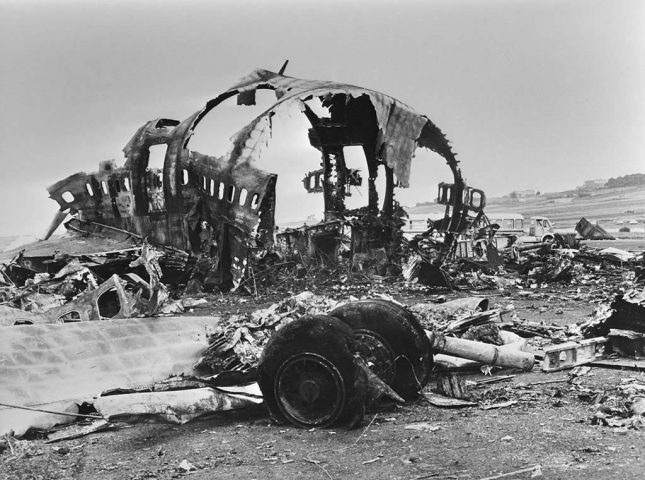
Air India Flight (1978)
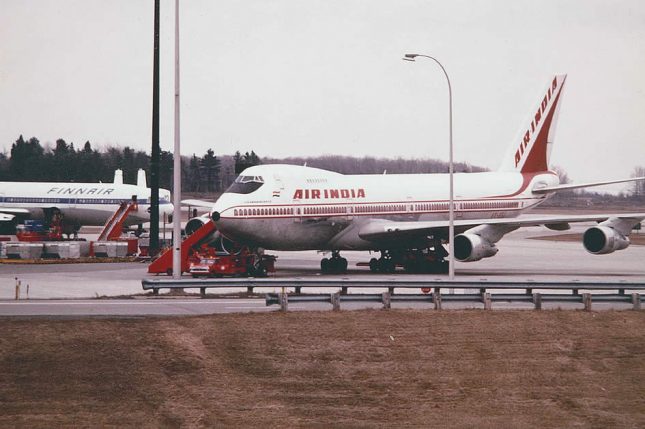
| Aircraft Type: | Boeing 747-237B |
|---|---|
| Cause of the crash: | Instrument malfunction, leading to a loss of situation awareness; crashed into the Arabian Sea. |
| Survivors: | 0 |
| Fatalities: | 213 |
The Air India Boeing 747, which had taken off from Dubai for Mumbai, crashed 101 seconds later after taking off in the Arabian Sea. All 190 passengers and 23 crew members died, and the cause of the accident was an AI malfunction.
Icelandic Airlines Flight 001 (1978)

| Aircraft Type: | Douglas DC-8-63CF |
|---|---|
| Cause of the crash: | Controlled flight into terrain caused by faulty airport equipment along with crew and ATC error. |
| Survivors: | 79 |
| Fatalities: | 183 |
The issue began for Icelandic Airlines Flight 001 when, just before the landing on the stopover in Colombo, Sri Lanka, the pilots onboard the flight were not respected the air traffic control instructions. Apparently, the crew used a different frequency and did not receive air traffic control warnings. The aircraft descended too fast towards the ground and then hit it. 183 people died, 32 were injured, and 79 survived.
This remains the worst aviation disaster suffered by Icelandic Airlines and is the worst crash in Icelandic aviation history.
Air New Zealand Flight 901 (1979)
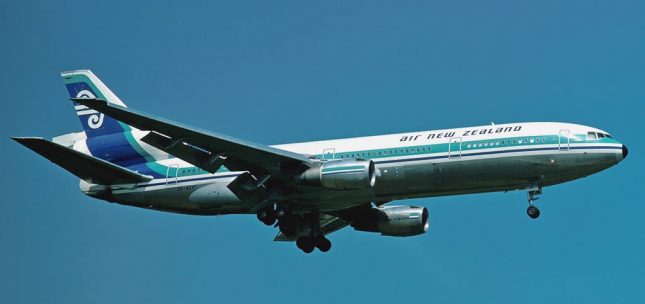
| Aircraft Type: | McDonnell Douglas DC-10-30 |
|---|---|
| Cause of the crash: | Controlled flight into terrain. |
| Survivors: | 0 |
| Fatalities: | 257 |
The crash of Flight 901 is also recognized as the Mount Erebus disaster, which took place on 28 November 1979. The McDonnell Douglas DC-10-30 aircraft owned by Air New Zealand was flown by two pilots who had never flown over Antarctica before but were highly experienced. The main factor that caused the accident was the false coordinates entered into the aircraft’s navigational systems.
A few days before the flight, Air New Zealand offered the pilots a flight plan with a typing mistake in it, which was noticed and reported by one of the pilots. The company then decided to change the coordinates of the Antarctica route in the main system but failed to announce to the pilots the change.
As a consequence, the pilots of Flight 901 flew on a different route of Mount Erebus, which required a much higher altitude. Unaware of this, the aircraft crashed directly into Mount Erebus, killing all 257 passengers.
American Airlines Flight 191 (1979)
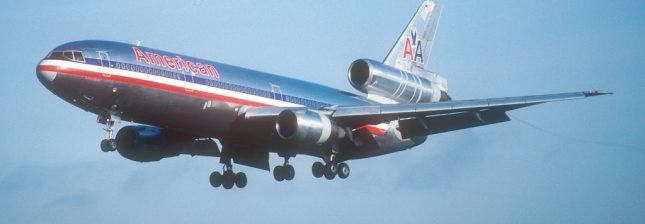
| Aircraft Type: | McDonnell Douglas DC-10-10 |
|---|---|
| Cause of the crash: | Loss of control caused by engine detachment due to improper maintenance. |
| Survivors: | 0 |
| Fatalities: | 271 + 2 ground fatalities |
This crash involved a McDonnell Douglas DC-10 of the American Airlines that took off on May 25, 1979, from O’Hare Airport to LAX Airport. But after take-off, the engine under the left wing broke down, causing extreme external damage to the aircraft’s wing and hydraulic system. Upon completion of the investigation, it was determined that the engine had failed due to improper maintenance. The crash caused the death of all 271 passengers on board and of 2 people on the ground.
Saudi Arabian Airlines Flight 163 (1980)
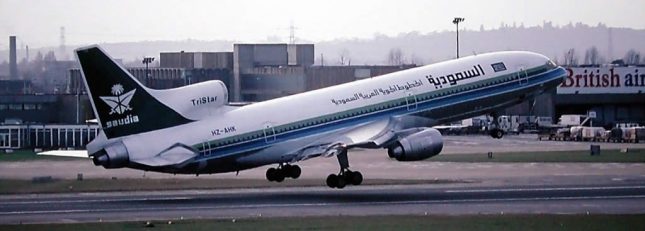
| Aircraft Type: | Lockheed L-1011-200 TriStar |
|---|---|
| Cause of the crash: | Cargo hold fire followed by failure to evacuate. |
| Survivors: | 0 |
| Fatalities: | 301 |
The Saudi Arabian Flight 163 involved a Lockheed L-1011-200 TriStar aircraft type and is one of the strangest planes accidents in history. The aircraft, which had taken off from Karachi Airport, Pakistan on 19 August 1980 for Jeddah, Saudi Arabia, had made the scheduled stopover at Riyadh for refueling. The plane was piloted by captain Mohammed Ali Khowyter and by first officer Sami Abdullah M. Hasanain. Both pilots lacked experience and had issues during training, being listed as slow learners.
7 minutes after taking off from Riyadh Airport, the crew members were warned of the smoke in the cargo compartment and decided to turn the place and land urgently at Riyadh. The aircraft landed again at Riyadh Airport but exited the 4,000m runway, leaving the emergency personnel, which had already been positioned to provide urgent assistance, far behind. Due to the fact that the engines were still running after landing, the emergency personnel could not intervene immediately, and, at the same time, for unknown reasons, the captain also failed to evacuate the aircraft. The 287 passengers and 14 crew members on board died from smoke inhalation.
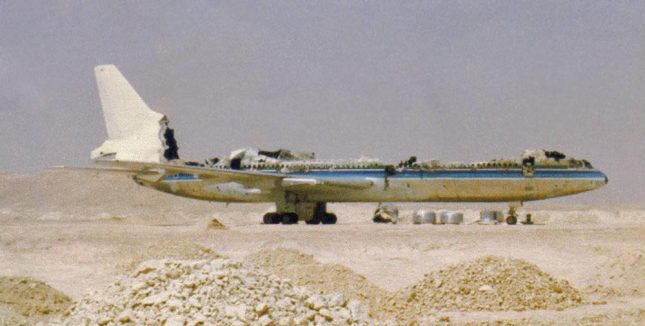
Avianca Flight 011 (1983)

| Aircraft Type: | Boeing 747-283B |
|---|---|
| Cause of the crash: | The main cause of the accident was the error of the pilot, who incorrectly determined the position of the aircraft. |
| Survivors: | 11 |
| Fatalities: | 181 |
On July 27, 1983, Avianca Flight 011 left Charles de Gaulle Airport, Paris en route for Bogota, Columbia when the plane crashed on a hill southeast of the airport. The main cause of the accident was the error of the pilot, who incorrectly determined the position of the aircraft. The accident cost the lives of 181 passengers with only 11 survivors.
Korean Airline Flight 007 (1983)

| Aircraft Type: | Boeing 747-230B |
|---|---|
| Cause of the crash: | Shot down by the Soviet Air Forces after navigation error by KAL pilots. |
| Survivors: | 0 |
| Fatalities: | 269 |
The crash of Korean Airline Flight 007 on September 1, 1983, was one of the most intense moments after the Cold War between the Soviet Union, the United States, Japan, and South Korea. The plane had taken off from New York City to Seoul via Anchorage, Alaska and during the flight, it abandoned its usual route and entered directly into Soviet Union airspace. The aircraft’s systems failed to warn the pilots of this issue and the pilots did not realize that their plane deviated from the main route. The Soviet Union, unable to identify the aircraft decided to treat it as a threat and destroyed it, killing all 269 passengers.
Japan Airlines Flight 123 (1985)

| Aircraft Type: | Boeing 747SR-46 |
|---|---|
| Cause of the crash: | In-flight structural failure due to improper maintenance, leading to rapid decompression and loss of control systems exacerbated by hypoxia. |
| Survivors: | 4 |
| Fatalities: | 520 |
The Japan Airlines Flight 123 air crash occurred on June 2, 1978, near Mount Takamagahara, Osaka. The plane took off from Tokyo’s Haneda Airport and after 12 minutes of flight, it underwent an extreme decompression that compromised the hydraulic system, as well as the loss of the vertical stabilizer. The pilots fought for more than 60 minutes to maintain control of the aircraft, but it was impossible to recover it. The plane ended up crashing in a mountainous area that did not facilitate the rescue operation. 520 passengers died while 4 survived.
Delta Airlines Flight 191 (1985)
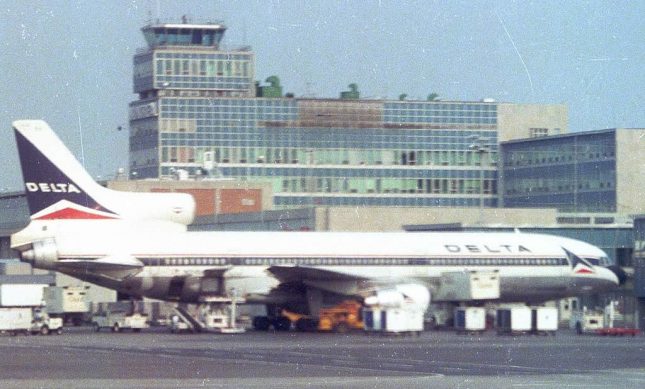
| Aircraft Type: | Lockheed L-1011-385-1 TriStar |
|---|---|
| Cause of the crash: | Loss of control due to a microburst, resulting in runway undershoot. |
| Survivors: | 27 |
| Fatalities: | 136 + 1 ground fatality |
The Lockheed L-1011-385-1 TriStar plane of the Delta Airlines company carrying 163 passengers took off from Fort Lauderdale, Florida, to Los Angeles. Despite two bad weather warnings received from two dispatchers, the pilots chose to fly through the thunderstorm. The flight was smooth until close to landing when the aircraft was damaged by a microburst, which cause the plane to crash over a car and two water tanks.
Flying through the thunderstorm and lack of training for the microbursts situation were two of the causes of the air disaster. To avoid a future tragedy of this kind, the NTSB decided to introduce mandatory training that will teach pilots how to respond to microbursts. 137 people died in the accident and 27 survived.
Aeroflot Flight 7425 (1985)

| Aircraft Type: | Tupolev Tu-154B-2 |
|---|---|
| Cause of the crash: | Stall due to pilot error and fatigue. |
| Survivors: | 0 |
| Fatalities: | 200 |
On July 10, 1985, the Tupolev Tu-154B-2 aircraft belonging to the Aeroflot airline performed a domestic flight from Karshi Airport to Pulkovo Airport with a stopover at Ufa Airport. The aircraft flew at an altitude of 11,600 meters (38,100 ft) and a speed of 400 km (250 mph) per hour, which was too low, causing vibrations, which the pilots assumed were engine surges.
This mistake of the pilots caused the plane to crash near Uchkuduk. All 191 passengers and 9 crew members died in the accident.
Air India Flight 182 (1985)

| Aircraft Type: | Boeing 747-237B |
|---|---|
| Cause of the crash: | Terrorist bombing by the Babbar Khalsa. |
| Survivors: | 0 |
| Fatalities: | 329 |
One of Air India’s biggest plane crashes is the one that occurred on June 23, 1985. The Boeing 747-237B was flying on the Montreal – London – Delhi – Mumbai route when a bomb exploded, immediately disintegrating the plane into the air. Its remains fell on the west coast of Ireland. The bomb planted in this plane was part of a larger plan, in which another bomb had been implanted in another plane of the same company that was in Japan at that time. The attack was organized by a separatist group called Babbar Khalsa. As a result of the terrorist act, all 329 people died.
LOT Polish Airlines Flight 5055 (1987)
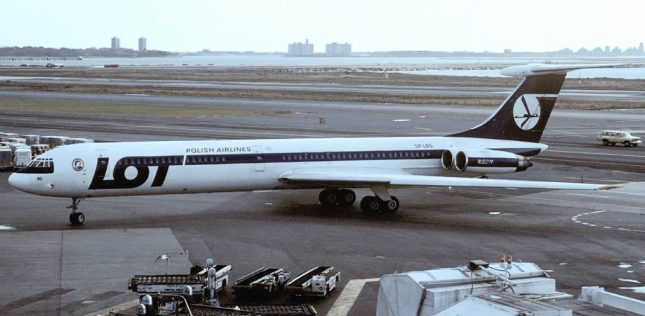
| Aircraft Type: | Ilyushin Il-62M |
|---|---|
| Cause of the crash: | The investigation concluded that the accident occurred due to the disintegration of an engine shaft, which caused a fire on board and shut down all aircraft systems. |
| Survivors: | 0 |
| Fatalities: | 183 |
LOT Polish Airlines Flight 5055 had left Warsaw Frederic Chopin Airport, Warsaw, Poland, and was on its way to John F. Kennedy International Airport, New York, the United States when the plane crashed in the Kabaty Woods nature reserve. The investigation concluded that the accident occurred due to the disintegration of an engine shaft, which caused a fire on board and shut down all aircraft systems. 183 people died in this catastrophic accident.
Air Africa RA 26222 (1988)
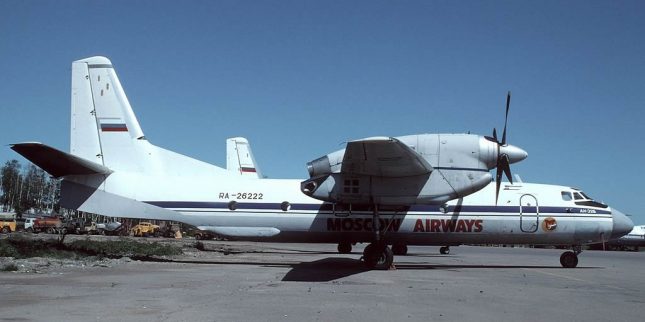
| Aircraft Type: | Antonov An-32B |
|---|---|
| Cause of the crash: | The accident occurred because the plane had been overloaded and could not achieve the speed needed to take off. |
| Survivors: | 4 |
| Fatalities: | 2 + 225 to 348 ground fatalities |
1996 Air Africa flight did not involve so many onboard passengers, but it killed between 225 – 348 and injured other 253 on the ground while the six passengers survived. The aircraft was headed to Kahemba Airport, but it crashed into the open-air Simbazikita produce market during take-off. The accident occurred because the plane had been overloaded and could not achieve the speed needed to take off.
Pan Am Flight 103 (1988)
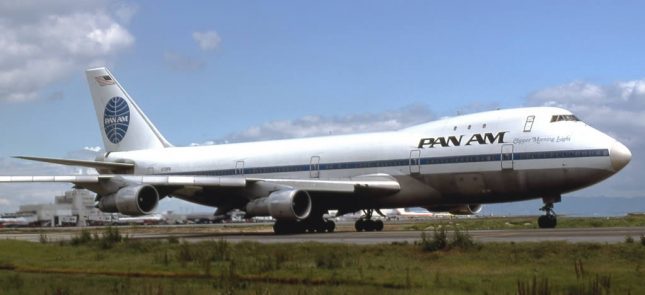
| Aircraft Type: | Boeing 747-121 |
|---|---|
| Cause of the crash: | In-flight breakup due to terrorist bombing. |
| Survivors: | 0 |
| Fatalities: | 259 + 11 ground fatalities |
On a route from Frankfurt to Detroit via 2 stopovers in London and New York City, Pan Am Flight 103 was destroyed by a bomb that had been planted onboard the airplane. The air disaster is also known as the Lockerbie bombing and remains the deadliest terrorist attack in the history of the United Kingdom. The investigation revealed that the bombing caused massive damage to the Boeing 747-121, and the pilots did not even have time to react. Also, after three years two men of Lebanese origin were found guilty of causing the accident. The Lybian leader Muammar Gaddafi said that he was definitely not involved in the incident, agreed to hand over the two men, and paid compensation to the 259 families of the victims.
Iran Air Flight 655 (1988)
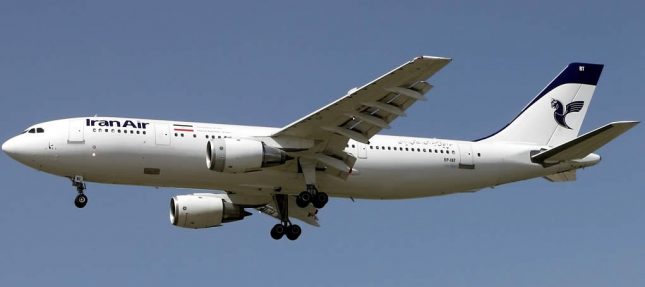
| Aircraft Type: | Airbus A300B2-203 |
|---|---|
| Cause of the crash: | Shot down by a missile fired from USS Vincennes. |
| Survivors: | 0 |
| Fatalities: | 290 |
This is another case of an airline disaster shocking the world. On July 3rd, 1988, Iran Air Flight 655 left Tehran en route for Dubai when it was shot down by an SM-2MR surface-to-air missile. Airbus A300B2-203 flew its usual route over Iran’s territorial waters when the United States Navy wrongly identified it as an attacking F-14 Tomcat aircraft of the Iranian Air Force. According to the United States Navy, the decision to take down the plane was made after 10 attempts to contact the aircraft but had no response.
The US government has expressed its regret over the incident, which took place during the Iran-Iraq war. They also paid $ 61.8 million on an ex gratia basis in compensation to the families of those 290 victims.
United Airlines Flight 232 (1989)
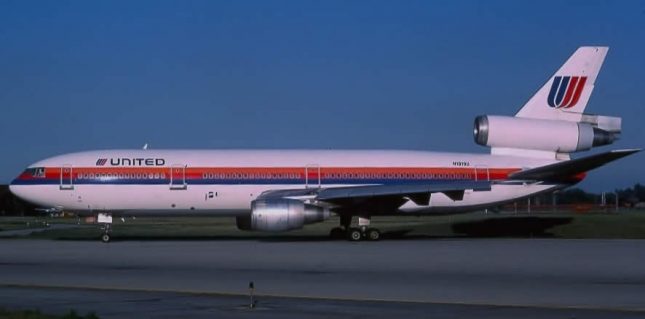
| Aircraft Type: | McDonnell Douglas DC-10-10 |
|---|---|
| Cause of the crash: | Crash-landed following uncontained engine failure and loss of hydraulics. |
| Survivors: | 184 |
| Fatalities: | 112 |
The next accident on the list is, at the same time, the deadliest accident in the history of the United Airlines company, but also one of the most successful ones due to a large number of survivors. On July 19, 1989, the McDonnell Douglas DC-10-10 owned by United Airlines took off from Stapleton International Airport in Denver to O’Hare International Airport in Chicago when the tail engine suffered an extreme failure that damaged the hydraulic lines, which led to the loss of almost all flight controls.
With no control over the plane, the experienced crew decided to try an emergency landing at the Sioux Gateway Airport. They fought for more than 30 minutes to maintain the position of the plane by reducing the power of the left engine and applying maximum power to the engine on the right. During landing, the tail section and cockpit broke on impact while a large amount of fuel ignited, causing the death of 112 passengers. The pilots and the rest of the 184 passengers survived the accident.
Nigeria Airways Flight 2120 (1991)

| Aircraft Type: | Douglas DC-8-61 |
|---|---|
| Cause of the crash: | Under-inflated tire overheating, leading to an in-flight fire. |
| Survivors: | 0 |
| Fatalities: | 261 |
The Nigeria Airways Flight 2120 crash took place on 11 July 1991, when a Douglas DC-8-61 owned by the Canadian company Nolisair departed from Jeddah, Saudi Arabia, to Sokoto, Nigeria.
The plane was caught in flames shortly after take-off, but this was not known to the pilots because there were no sensors in the area where the fire first started. The pilots received confusing warnings from the aircraft system and realized that the aircraft was on fire when the smoke reached the cockpit.
The investigation found that the aircraft had caught fire during takeoff due to the fact that the pressure of two tires was below minimum. The mechanic was aware of this and tried to inflate them, but in order not to cause a delay, the project manager decided that the plane should take off without intervening.
The disaster that claimed the lives of all 261 people on board remains the deadliest aviation disaster involving a Canadian airline.
Lauda Air Flight 004 (1991)
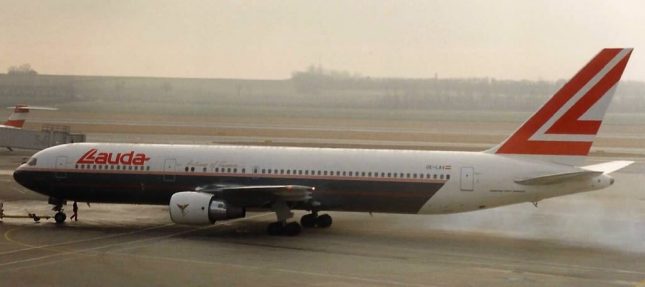
| Aircraft Type: | Boeing 767-3Z9ER |
|---|---|
| Cause of the crash: | In-flight break-up caused by uncommanded thrust reverser deployment; due to possible design flaw. |
| Survivors: | 0 |
| Fatalities: | 223 |
On May 26, 1991, the Lauda Air Flight 004 departed for Vienna, Austria from Bangkok, Thailand. The Boeing 767-3Z9ER used for this flight was delivered in 1989 to Lauda Air and was having more than 456 cycles at the time of the crash. The aircraft was flying at 30,000 feet and had a high speed (400 knots (740 km/h; 460 mph)) when the thrust reverser of one of the two Pratt & Whitney PW4060 engines deployed mid-air. This left the pilots with no control over the plane, which began to disintegrate mid-air from over speed. The plane crashed into Phu Toei National Park, killing all 213 passengers and 10 crew members aboard.
Formula One pilot and airline owner Niki Lauda confronted Boeing company, which did not agree that the accident was due to a design defect. Following research and many fly simulations, Lauda stated that “this was the first time in eight months that it had been made clear that the manufacturer was at fault and not the operator of the aircraft“. Later on, Boeing decided to modify the thrust reverser system.
China Airlines Flight 140 (1994)

| Aircraft Type: | Airbus A300B4-622R |
|---|---|
| Cause of the crash: | Stalled during approach due to pilot error and design flaw. |
| Survivors: | 7 |
| Fatalities: | 264 |
The plane crash at Nagoya Airport, Japan, which killed 264 people, adds to our list. The Airbus A300B4-622R was en route to Nagoya, Japan from Taipei, Taiwan when it collapsed just before landing, without any warning or indication of any problems.
The investigation revealed that human error was to blame for this air disaster. The co-pilot unintentionally activated the takeoff/go-around (TO/GA) setting when preparing for landing, which tells the autopilot to increase the throttle to take off. The pilots abandoned the landing but did not realize that both TO/GA and the autopilot were still running. The aircraft destabilized and began to descend very quickly due to insufficient forces.
7 passengers survived this terrible accident, and all Airbus A300-600R aircrafts received an update to the air flight system that would disengage the autopilot “when certain manual controls input is applied on the control wheel in GO-AROUND mode”.
Trans World Airlines Flight 800 (1996)
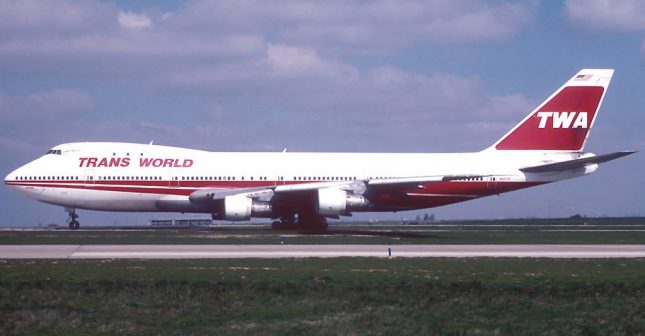
| Aircraft Type: | Boeing 747-131 |
|---|---|
| Cause of the crash: | The investigation of this air disaster took almost four years and it concluded that most probably the incident was caused by a short circuit that led to a fuel tank explosion. |
| Survivors: | 0 |
| Fatalities: | 230 |
The 1996 crash of TWA Flight 800 involving a Boeing 747-131, one of the deadliest aviation accidents in US history, remains shrouded in mystery. The Trans World Airlines Flight 800 took off from John F. Kennedy International Airport and was headed to Leonardo da Vinci Airport, Rome when it exploded mid-air and crashed into the Atlantic Ocean, killing all 230 passengers. The investigation of this air disaster took almost four years and it concluded that most probably the incident was caused by a short circuit that led to a fuel tank explosion. The NTSB investigators required new developments to be made to the aircraft in order to prevent future fuel tank explosions.
Birgenair Flight 301 (1996)
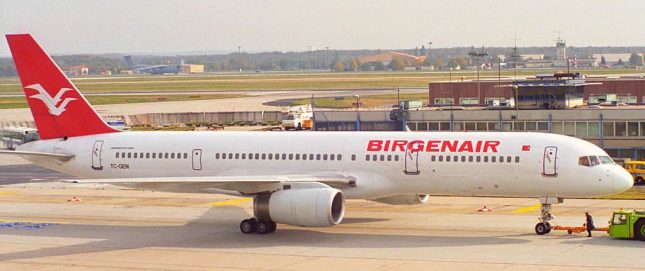
| Aircraft Type: | Boeing 757-225 |
|---|---|
| Cause of the crash: | Crashed into the sea following instrument failure and stall. |
| Survivors: | 0 |
| Fatalities: | 189 |
Birgenair Flight 301 took off on February 6, 1996, from Puerto Plata, the Dominican Republic toward Frankfurt, Germany. The pilot observed a problem with the airspeed indicator (ASI) before take-off but chose to continue it. Shortly after takeoff, alerts were activated and warned the pilot about rudder ratio and Mach airspeed trim. At one point the aircraft was flying so slow that it became unstable, and after a couple of minutes, the aircraft crashed into the Atlantic Ocean, killing all 189 people on board.
It seems that the aircraft had not been used for 20 days before this accident, and the pitot tube covers were also removed during that time, being reattached only two days before the flight. The Birgenair Flight 301 is the deadliest aviation crash involving a Boeing 757 aircraft.
Charkhi Dadri Mid-Air Collision Flight 763 (1996)
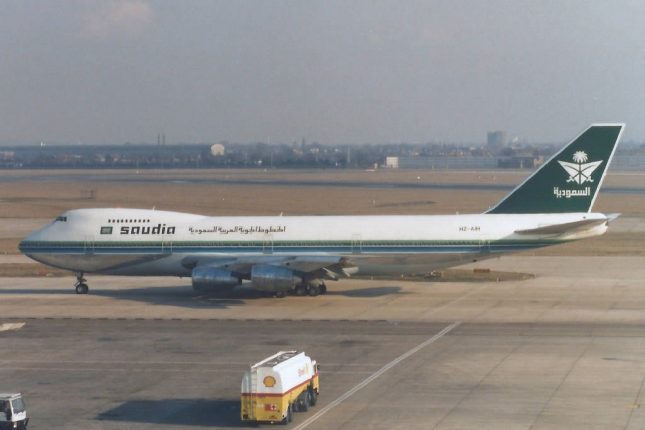

| First Aircraft Type: | Boeing 747-168B |
|---|---|
| Cause of the crash: | The commission determined that the pilot of the Kazakhstan flight failed to follow the ATC instructions. |
| Survivors: | 0 |
| Fatalities: | 312 |
| ——– | ——– |
| Second Aircraft Type: | Ilyushin Il-76TD |
| Survivors: | 0 |
| Fatalities: | 37 |
The world’s deadliest mid-air collision occurred on November 12, 1996, and it is known as the Charkhi Dadri mid-air collision after the name of the village where the air disaster happened.
The collision took place between Kazakhstan Airlines 1907 flight and Saudia 762 flight. The Kazakhstan flight departed from Kazakhstan to Delhi while the Saudi flight was on its way to Saudi Arabia from India. Both aircraft involved were Boeing 747 and piloted by highly experienced pilots. The two planes were flying on the same airway but in opposite directions when the Kazakhstan flight had been cleared to descend to 15,000 feet while the Saudi had been given the green light to climb up to 14,000 feet. Although reported to have reached 15,000 feet, the Kazakhstan flight was actually at 14,500 feet when the two aircrafts collided, the tail of Flight 1907 cutting off the left-wing and the horizontal stabilizer of the Saudi flight.
The commission determined that the pilot of the Kazakhstan flight failed to follow the ATC instructions. A total of 349 passengers were on both planes and all died.
Garuda Indonesia Flight 152 (1997)
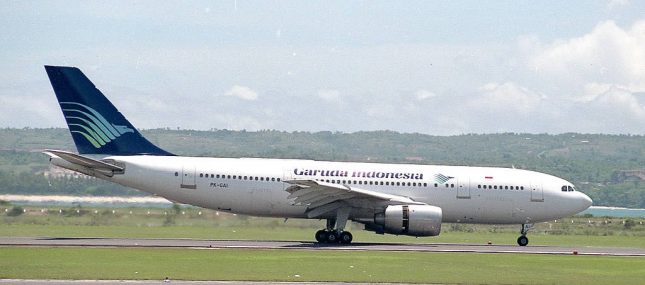
| Aircraft Type: | Airbus A300B4-220 |
|---|---|
| Cause of the crash: | Controlled flight into terrain due to pilot error, ATC error, and GPWS malfunction. |
| Survivors: | 0 |
| Fatalities: | 234 |
The Garuda Indonesia Flight 152 involving an Airbus A300B4-220 aircraft remains the deadliest air disaster in the history of Indonesia. On 26 September 1997, the aircraft left the Soekarno-Hatta International Airport, Jakarta, and was headed to Polonia International Airport, Medan, Indonesia. The flight had been without incident until near the airport in Medan when the pilots began to prepare for landing.
The pilots contacted the control tower in Medan, requesting alignment instructions on Runway 05. Due to the fact that the air traffic controllers were offering instruction, at the same time, to another flight with the same number, the Merpati Nusantara Airlines Flight 152, they confused the planes and gave wrong information to the pilots from Garuda Indonesia Flight 152. Confused by the instructions, the pilots tried to talk again with the air traffic controllers, but meanwhile, their aircraft descended below 2,000 feet, causing a first impact with the treetops. The aircraft crashed just 27 km from Runway 05 in a ravine.
234 people died, and 48 of the bodies were buried in a mass grave because they could not be identified.
Korean Air Flight 801 (1997)
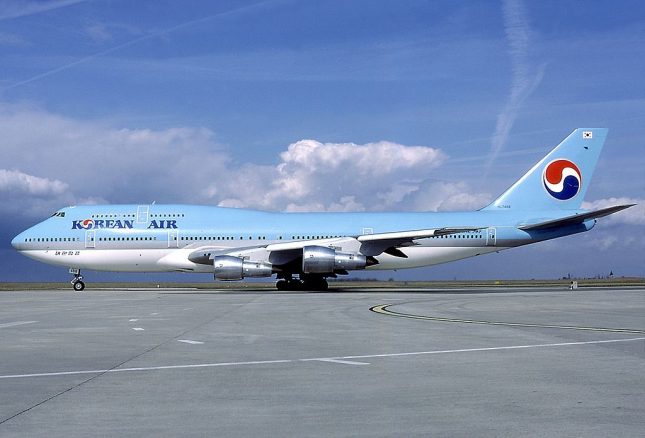
| Aircraft Type: | Boeing 747-3B5 |
|---|---|
| Cause of the crash: | The NTSB cites poor communication between the flight crew as probable cause for the air crash, along with the captain’s poor decision-making on the non-precision approach. Controlled flight into terrain. |
| Survivors: | 26 |
| Fatalities: | 228 |
Bound for Guam from Seoul on August 6, 1997, the Korean Air Flight 801 crashed in Sasa Valley just as it was preparing to land. The captain of the Boeing 747-3B5 aircraft was Park Jong-Chul, who had approximately 9,000 hours of flying experience, while the 40-year-old Song Kyung-ho was the first officer and the 57-year-old Nam Suk-hoon the flight engineer.
In heavy rain and low visibility conditions, the crew was preparing to land but had difficulty seeing the airport and identifying the signal of the runway. Eventually, the crew detected a signal that the captain thought was the runway he was supposed to land on, while the fly engineer warned him it was just a false signal from another grounded device. Convinced that the signal was correct, the captain ignored the colleague’s warning and continued the landing even if the airport was still not in his sight. The plane crashed, killing 223 of the 254 passengers on board. Shin Ki Ha, the leader of the National Congress for New Politics, and his wife were among the passengers.
Swissair Flight 111 (1998)
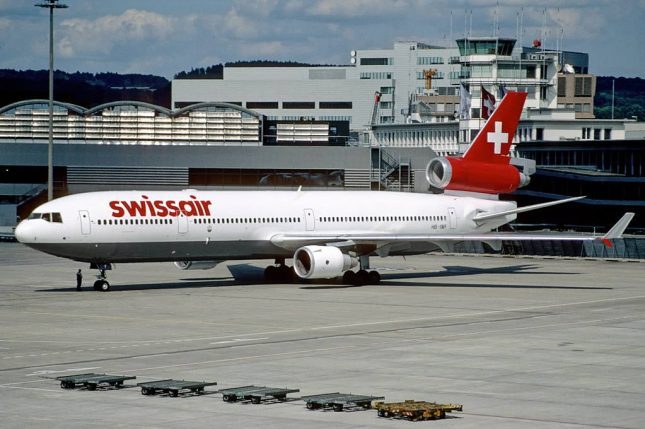
| Aircraft Type: | McDonnell Douglas MD-11 |
|---|---|
| Cause of the crash: | The investigation revealed a total of eleven causes and factors that contributed to the accident, the most important being that the materials used in the structure of the aircraft were highly flammable. |
| Survivors: | 0 |
| Fatalities: | 229 |
This airline disaster involved a McDonnell Douglas MD-11 owned by the Swissair company. On September 2nd, 1998, Flight 111 was a codeshare flight between Delta Airlines and Swissair that departed New York City, United States for Geneva, Switzerland.
During the flight, the pilots smelled a strange odor of smoke in the cabin, and after a while, the fire became visible. That is when they decided to make a pan-pan call to Moncton air traffic control. They also asked permission to divert to another airport and dump some of the fuel. Their requests were granted, but unfortunately, the fire had spread so far that it shut down the aircraft’s autopilot. Although the pilots tried to manually fly the aircraft, it crashed a few minutes later in the Atlantic Ocean, killing all 229 passengers and 14 crew members aboard.
The investigation revealed a total of eleven causes and factors that contributed to the accident, the most important being that the materials used in the structure of the aircraft were highly flammable.
China Airlines Flight 676 (1998)
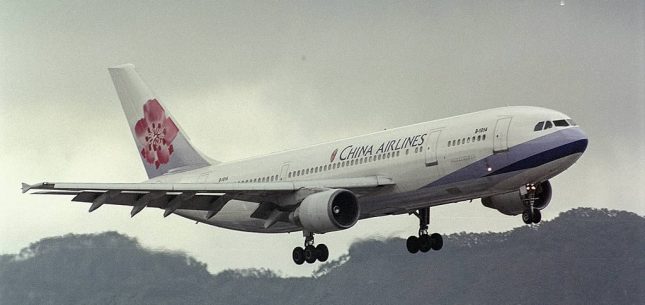
| Aircraft Type: | Airbus A300B4-622R |
|---|---|
| Cause of the crash: | The Civil Aviation Administration concluded that pilot error was the cause of the crash of Flight 676. |
| Survivors: | 0 |
| Fatalities: | 196 + 7 ground fatalities |
The crash of China Flight 676 was one of the two most tragic accidents of the airline company on the territory of Taiwan that damaged the company’s reputation. The Airbus A300B4-622R was headed to Chiang Kai-Shek Int’l Airport Taoyuan, Taiwan from Ngurah Rai Int’l Airport Bali, Indonesia. Due to the bad weather conditions, the captain wanted to reach the ground as soon as possible, so he decided to deactivate the autopilot. Then, he realized that the plane was still too high to land, at which point he decided to abandon the procedure and ordered a go-around sequence but forgot to activate the autopilot again. This mistake made by the captain caused the plane to crash into a residential area in Tayuan, Taoyuan County. All 196 people on board lost their lives in the disaster along with the other seven on the ground.
EgyptAir Flight 990 (1999)

| Aircraft Type: | Boeing 767-366ER |
|---|---|
| Cause of the crash: | The NTSB conclusion: Intentionally crashed into the ocean. The ECAA conclusion: Mechanical failure of the aircraft’s elevator control system. |
| Survivors: | 0 |
| Fatalities: | 217 |
The EgyptAir Flight 990 regularly flew between Los Angeles International Airport and Cairo International Airport in Egypt. The Boeing 767-366ER was operated by a so-called active crew and one relief crew that took turns during the ten-hour flight. Tragically, the flight on 31 October 1999 did not manage to reach its final destination, crashing into the Atlantic Ocean near Massachusetts.
The two commissions that investigated the crash, the National Transportation Safety Board (NTSB) and the International Civil Aviation Organization (ECAA), had different results regarding the cause of the accident. Based on the cockpit voice recorder and flight data, the NTSB concluded that the place was intentionally crashed by one of the captains of the relief crew. On the other side, the ECAA said that the cause of the accident was a mechanical failure, refusing to accept the result of the NTSB’s investigation.
Sadly, the two commissions did not reach a common conclusion about the accident that killed all 217 passengers.
Alaska Airlines Flight 261 (2000)
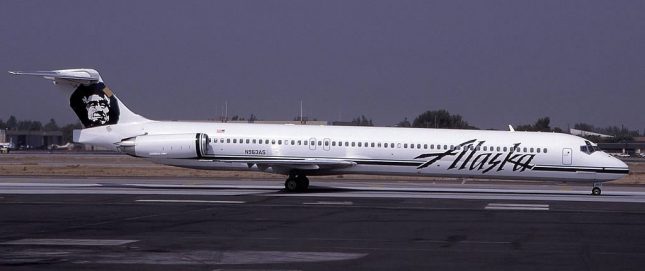
| Aircraft Type: | McDonnell Douglas MD-83 |
|---|---|
| Cause of the crash: | Guilty for this tragedy was the fatigue of a jackscrew along with the poor maintenance. |
| Survivors: | 0 |
| Fatalities: | 88 |
The McDonnell Douglas MD-83, operated by Alaska Airlines, was flying from Puerto Vallarta, Mexico to Seattle, United States. Just as the aircraft was over the Pacific Ocean, pilots contacted air traffic control to report a possible horizontal stabilizer malfunction and to request permission to divert to the nearest airport, which was the Los Angeles International Airport. The malfunction became within minutes an issue, causing a dive that the pilots managed to handle. Unfortunately, on the second dive, they lost plane control and crashed directly into the ocean.
Guilty for this tragedy was the fatigue of a jackscrew along with the poor maintenance. All 88 passengers died and only a few bodies were identified.
Air France Flight 4590 (2000)

| Aircraft Type: | Aerospatiale-BAC Concorde |
|---|---|
| Cause of the crash: | The investigation revealed that the aircraft had been overloaded with 810 kilograms (1,790 lb) over the maximum weight at take-off, and this led to the explosion of a tire, which in turn affected the left-wing full of fuel. |
| Survivors: | 0 |
| Fatalities: | 109 + 4 ground fatalities |
Air France Flight 4590 involved the Aerospatiale-BAC Concorde aircraft that had been considered one of the world’s safest airplanes for a long time. The plane, which had just taken off from Charles de Gaulle Airport, Paris to John F. Kennedy International Airport, New York, crashed after two minutes in a hotel near Gonesse.
The investigation revealed that the aircraft had been overloaded with 810 kilograms (1,790 lb) over the maximum weight at take-off, and this led to the explosion of a tire, which in turn affected the left-wing full of fuel.
All 109 passengers died along with 4 hotel guests.
9/11 Air Crash (2001)
The attacks on September 11, 2001, shocked the whole world. 19 hijackers managed to take control of four planes that were flying regular commercial flights. All four planes were crashed by hijackers in different locations.
American Airlines Flight 11
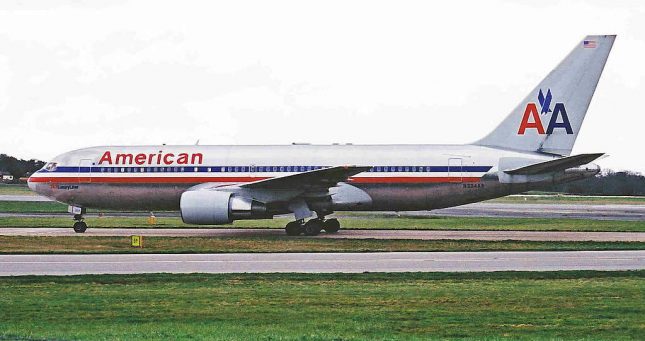
| Aircraft Type: | Boeing 767-223ER |
|---|---|
| Cause of the crash: | Terrorist suicide hijacking. |
| Survivors: | 0 |
| Fatalities: | 92 (including the hijackers) + c. 1600 ground fatalities |
This aircraft was having 87 passengers aboard and was crashed into the northern façade of the North Tower of the World Trade Center.
United Airlines Flight 175

| Aircraft Type: | Boeing 767-200 |
|---|---|
| Cause of the crash: | Terrorist suicide hijacking. |
| Survivors: | 0 |
| Fatalities: | 65 (including 5 hijackers) + c. 1000 ground fatalities |
With a total of 60 passengers, this flight was heading to Los Angeles when the hijackers flew the plane directly into the South Tower of the World Trade Center.
American Airlines Flight 77
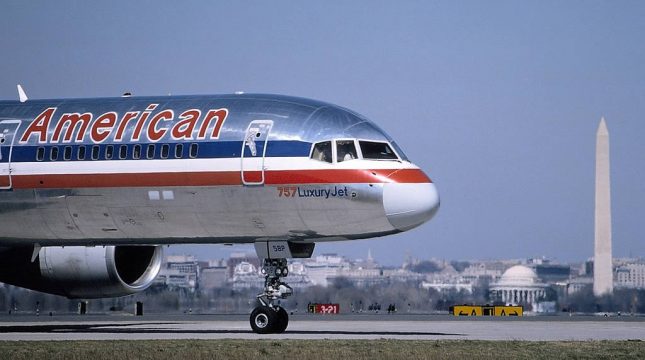
| Aircraft Type: | Boeing 757-223 |
|---|---|
| Cause of the crash: | Terrorist suicide hijacking. |
| Survivors: | 0 |
| Fatalities: | 64 (including 5 hijackers) + 125 (including emergency workers) at the Pentagon |
At 9:37 am, Flight 77 flew into the Pentagon building, in Virginia, killing all 59 passengers aboard.
United Airlines Flight 93

| Aircraft Type: | Boeing 757-222 |
|---|---|
| Cause of the crash: | Terrorist suicide hijacking. |
| Survivors: | 0 |
| Fatalities: | 44 (including 4 hijackers) |
The United Airlines Flight 93 was the last plane that was crashed by hijackers. At 10:03 am, the plane crashed into a field in Pennsylvania, killing all 40 passengers.
American Airlines Flight 587 (2001)
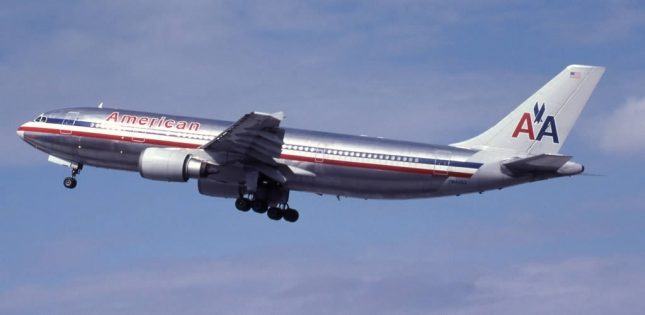
| Aircraft Type: | Airbus A300B4-605R |
|---|---|
| Cause of the crash: | Crashed following pilot error, separation of the vertical stabilizer and loss of control. |
| Survivors: | 0 |
| Fatalities: | 260 + 5 ground fatalities |
The second-deadliest aviation in the history of the Airbus 300 is the one named American Airlines Flight 587. On November 12, 2002, the plane departed John F. Kennedy International Airport for Las Americas International Airport in Santo Domingo with 260 passengers on board.
The aircraft took off a minute and a half after a Japan Airlines (JAL) aircraft. Although the control tower warned flight 587 of turbulence caused by the JAL flight, it managed to take off and reached an altitude of 1,300 feet. But a new wave of turbulence destabilized the plane that went into a flat spin, crashing into a part of Queens.
All 260 people on board and five on the ground perished.
China Airlines Flight 611 (2002)
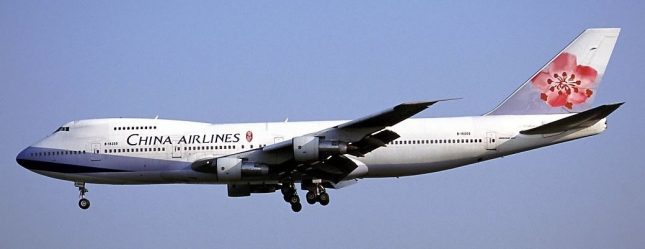
| Aircraft Type: | Boeing 747-209B |
|---|---|
| Cause of the crash: | The investigation concluded that the main cause of the accident was the result of fatigue cracking caused by inadequate maintenance. |
| Survivors: | 0 |
| Fatalities: | 225 |
The country of Taiwan was captivated on May 25, 2002, when news broke that China Airlines Flight 611, which departed from Chiang Kai-shek International Airport to Hong Kong International Airport failed to make its final destination. The Boeing 747-209B aircraft was the only one of its kind in the Chinese Airline fleet. On that specific day, the aircraft was piloted by three highly experienced pilots that had more than 29,000 flight hours together, but they were not able to do anything because the plane simply disintegrated in mid-air. The investigation concluded that the main cause of the accident was the result of fatigue cracking caused by inadequate maintenance.
All 225 passengers on board were killed, and only 175 were recovered and identified based on visual identification, fingerprints, and dental examinations. China Airlines Flight 611 remains the deadliest air crash in the history of Taiwan.
TAM Airlines Flight 3054 (2007)
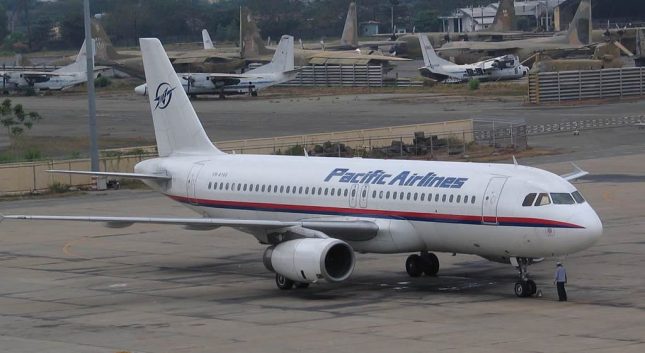
| Aircraft Type: | Airbus A320-233 |
|---|---|
| Cause of the crash: | Runway excursion caused by pilot error. |
| Survivors: | 0 |
| Fatalities: | 187 + 12 ground fatalities |
TAM Airlines Flight 3054 remains the deadliest aviation accident in Brazil and in South American history. The Airbus A320-233 of the TAM Airlines was scheduled on July 17, 2007, for a domestic flight from Salgado Filho International Airport, Porto Alegre, Brazil to São Paulo–Congonhas Airport, São Paulo, Brazil, and had 187 occupants on board. The aircraft lined up on runway 35 L, being ready for landing during moderate rain, but the aircraft overran the runway and crashed into a nearby warehouse.
The aircraft exploded on impact, killing all those onboard and other 12 other people on the ground. It seems that the accident took place due to the mistakes made by the pilots.
Air France 447 (2009)

| Aircraft Type: | Airbus A330-203 |
|---|---|
| Cause of the crash: | First, the plane entered a turbulent area, and then it encountered icy conditions that covered the aircraft’s Pitot tubes. That caused the autopilot to shut down and forced the pilots to take manual control of the aircraft. Also, being under manual control, the aircraft reached the maximum altitude, a thing not noticed by the pilots. Eventually, the pilots lost control of the plane that crashed in the Atlantic Ocean. |
| Survivors: | 0 |
| Fatalities: | 228 |
On June 1st,2009, Air France Flight 447, departed from Rio de Janeiro, Brazil to Paris, France with 228 passengers aboard. During the 13-hour flight, the Airbus A330-203 was required to be flown by a captain and two first officers, who needed to take rest periods one at a time. Thus, one of the co-pilots was the one who had a rest, followed by the captain. A few minutes after the captain decided to enter its rest period, the series of events that led to the plane crash began.
First, the plane entered a turbulent area, and then it encountered icy conditions that covered the aircraft’s Pitot tubes. That caused the autopilot to shut down and forced the pilots to take manual control of the aircraft. Also, being under manual control, the aircraft reached the maximum altitude, a thing not noticed by the pilots. Eventually, the pilots lost control of the plane that crashed in the Atlantic Ocean, killing all 228 passengers.
Only 50 bodies were recovered in the weeks following the tragedy while the flight recorders were recovered from the ocean floor two years later.
Malaysia Airlines Flight 17 (2014)
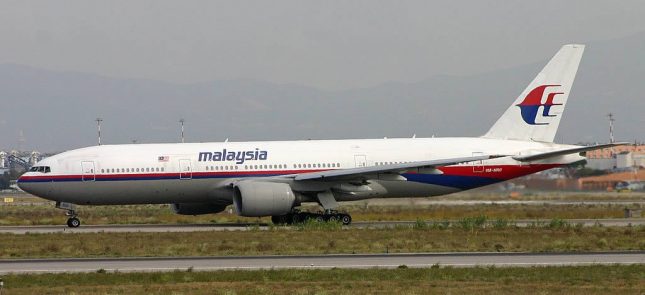
| Aircraft Type: | Boeing 777-200ER |
|---|---|
| Cause of the crash: | Shot down by a Buk 9M83 surface-to-air missile transported from Russia on the day of the crash. |
| Survivors: | 0 |
| Fatalities: | 298 |
The air disaster involving Malaysia Airlines Flight 17 remains the deadliest airliner shootdown incident to date. On 17 July 2014, the Boeing 777-200ER took off from Amsterdam carrying 283 passengers and 15 crew members. The pilots were flying according to the flight plan, which involved flying over Ukraine, where a war was taking place in the Donbas region.
When they got above the city of Dnipropetrovsk when they requested a deviation of 20 nautical miles, which was approved by air traffic control. A couple of moments later, the flight was detonated by a Buk ground-to-air missile that most probably belonged to the pro-Russian separatists. Although the accident was to be investigated by the country where the accident took place, Ukraine delegated the Netherlands to be the one that conducted the investigation.
Although it was not an easy investigation due to the war in the Donbas region, it concluded that the air disaster was caused by a Buk 9M38-series surface-to-air missile. The Netherlands also accused Russia of implication and a couple of years later decided to take Russia to the European Court of Human Rights for “its role in the downing” of Flight MH17.
Malaysia Airlines Flight 370 (2014)

| Aircraft Type: | Boeing 777-200ER |
|---|---|
| Cause of the crash: | Cause unknown, some debris found. |
| Survivors: | 0 (presumed) |
| Fatalities: | 239 (presumed) |
Another tragedy occurred in Southeast Asia on March 4, 2014, when a Malaysia Airlines Boeing 777-200ER suddenly disappeared from the radar 38 minutes after takeoff. The place, which has 227 passengers and 12 cabin crew on board, had departed from Kuala Lumpur International Airport and had a final destination in Beijing Capital International Airport. From the research at that time, it had emerged that the place crashed somewhere in northwestern Peninsular Malaysia. The operation of finding the aircraft is known as being the most expensive search in the history of aviation, lasting three years and covering more than 120,000 square kilometers.
Theories such as a hypoxia event and hijacking have been speculated as causes of disappearance, but unfortunately, when the investigation was over, the cause of the accident was declared inconclusive. Furthermore, apart from a few pieces found in 2016, both the aircraft and the bodies of those involved in the accident were never found.
Being one of the plane crashes that shocked the whole world, the responsible authorities have implemented appropriate measures to prevent such accidents from ever happening again. Increased battery life on underwater locator and lengthening of recording time on flight data and cockpit voice records are just some of them.
Metrojet Flight 9268 (2015)
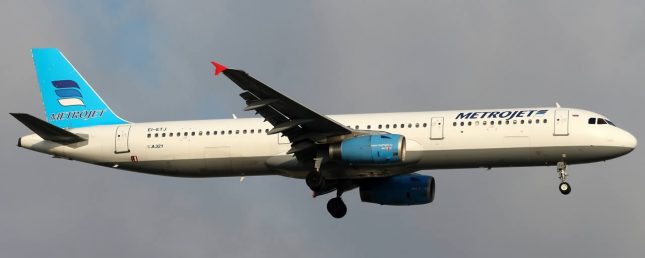
| Aircraft Type: | Airbus A321-231 |
|---|---|
| Cause of the crash: | Terrorist bombing by Islamic State’s Sinai Branch. The Egyptian authorities did not accept this conclusion and in 2020, the Egyptian court ruled out that the crash was not an act of terrorism |
| Survivors: | 0 |
| Fatalities: | 224 |
The Metrojet Flight 9268 is another plane crash that shocked Russia. On 31 October 2015, the Airbus A321-231 owned by Russian airline Kogalymavia took off from Sharm El Sheikh International Airport, Egypt for Pulkovo Aiport, Saint Petersburg, Russia when it disappeared from the radar.
Immediately after the accident, the media and authorities speculated on several possible causes that were responsible for the plane crash, including an onboard explosive device, a fuel explosion, metal fatigue, and lithium batteries overheating.
During the investigation, Russian authorities found explosive remnants from an improvised explosive device as evidence and concluded that the main cause of the crash was a terrorist attack. On the other side, the Egyptian authorities did not accept this conclusion and in 2020, the Egyptian court ruled out that the crash was not an act of terrorism.
All 224 passengers (212 Russian, 4 Ukrainians, 1 Belarusian) died.
Lion Air Flight 610 (2018)
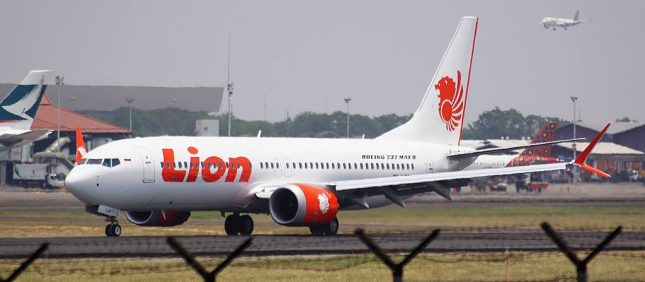
| Aircraft Type: | Boeing 737 MAX 8 |
|---|---|
| Cause of the crash: | The main cause of this accident was a flaw in the design of the aircraft that affected the Maneuvering Characteristics Augmentation System (MCAS). |
| Survivors: | 0 |
| Fatalities: | 189 |
The deadliest accident in Indonesia’s history, Flight 610 took off from Soekarno–Hatta International Airport, Jakarta to Indonesia, only to crash into the Java Sea. Five minutes after takeoff, the pilot noticed issues with the aircraft and asked to return back to the Jakarta Airport, but after 8 minutes the Boeing 737 MAX 8 plummet into the Sea.
The main cause of this accident was a flaw in the design of the aircraft that affected the Maneuvering Characteristics Augmentation System (MCAS). 181 passengers and 8 crew members died.











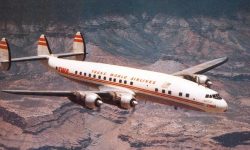

that’s why i’m afraid of flying
Kudos To You Guys